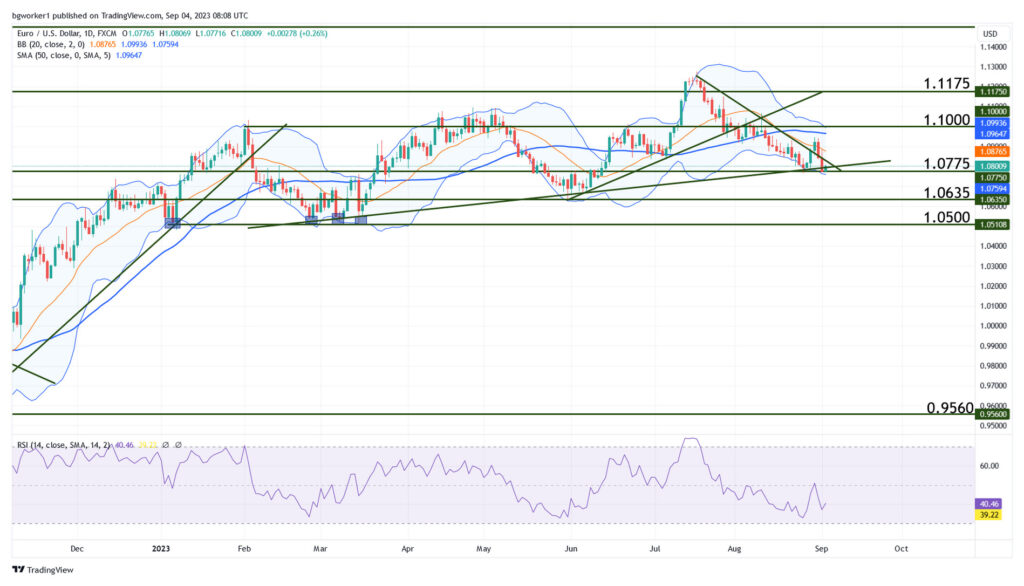U.S. Jobs Report: Impact on Dollar & Fed Rates
EUR/USD at Major Hurdle. Bounce-or-Break Scenario at Play
The U.S. labor market appears to be slowing down, as shown by last Friday’s jobs report. However, the data was mixed, with the Non-Farm Payrolls exceeding expectations, while the Average Hourly Earnings and Unemployment Rate missed the forecast.
According to the U.S. Bureau of Labor Statistics (BLS), 187K new jobs were created in August, more than the consensus 169K. The previous month’s number was revised to 157K from 187K. It looks like more often than not, the previous is revised lower, and it will be interesting to see if Friday’s number will also be lowered next month.
The Unemployment Rate jumped to 3.8%, missing expectations of 3.5%. The Average Hourly Earnings also came below the 0.3% forecast, at 0.2%. The previous was 0.4%.
The mixed jobs data, which shows signs of cooling off, fueled bets that the Fed is done hiking. At the time of writing, the CME FedWatch tool shows a 93% probability that the rate will remain unchanged at the next FOMC meeting.
Key Data for the Week Ahead
The upcoming week is light in terms of economic releases, which could mean that the technical aspect will take center stage. U.S. banks will be closed Monday in observance of Labor Day, while on the Euro side, ECB President Lagarde will deliver a speech at 1:30 pm GMT. She will speak in London, at an event organized by the European Economics and Financial Centre.
Tuesday will be sprinkled with Eurozone Services PMIs but most of them are “Final” versions, which tend to have a very low impact.
Wednesday at 2:00 pm GMT the U.S. Services PMI comes out and it usually has a hefty impact on the US Dollar because the Services sector is an important part of the U.S. economy.
Thursday at 2:00 pm GMT, FOMC Member Harker will speak and the week ends Friday with the German Final CPI that’s due for release at 6:00 am GMT. Usually, all “Final” versions have a lower impact but surprises can always happen.
Technical Outlook – EUR/USD
The pair is currently trading at 1.0795, trapped between the BRN (big round number) at 1.0800 and the support at 1.0775. The bearish trend line was broken last week but the price quickly returned below it after the greenback gained traction from the jobs report.
Going forward, it will be important to see how the pair behaves at this confluence zone. The key “players” are the horizontal support at 1.0775, the long-term bullish trend line, the bearish trend line drawn from the most recent peak, and the lower Bollinger Band.
A break of either of these S/R items can trigger an extended move in that direction but beware of false breaks. A true break should show either strong momentum or a re-test of the recently broken zone.
